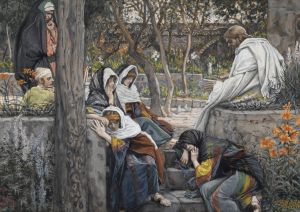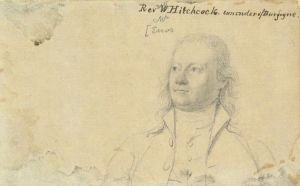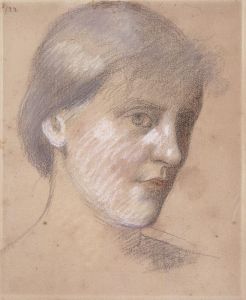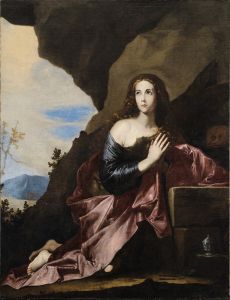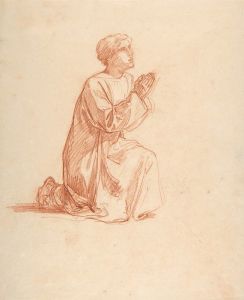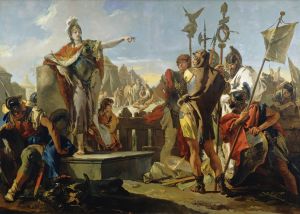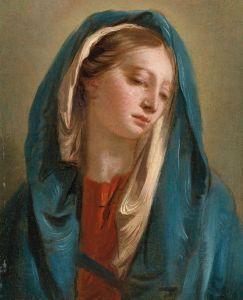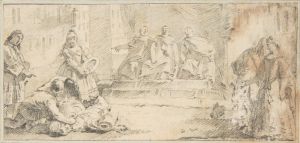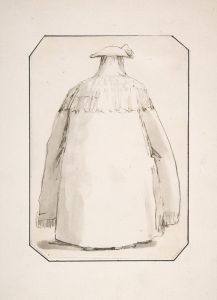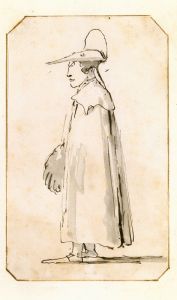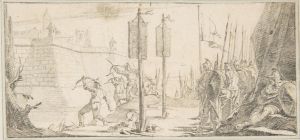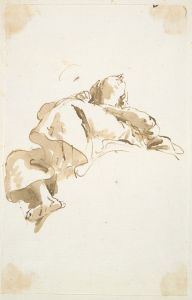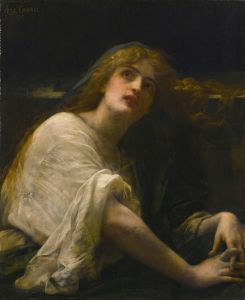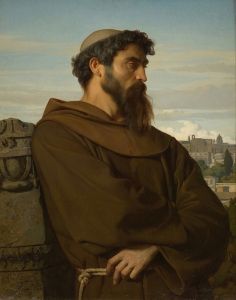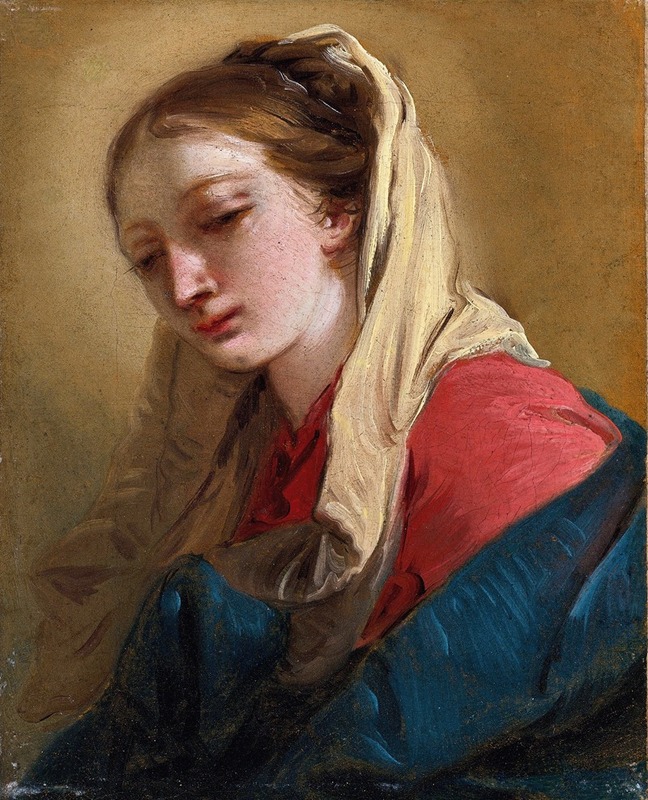
Mary Magdalene In Three-Quarter View, Veiled In A White Cloth
A hand-painted replica of Giovanni Battista Tiepolo’s masterpiece Mary Magdalene In Three-Quarter View, Veiled In A White Cloth, meticulously crafted by professional artists to capture the true essence of the original. Each piece is created with museum-quality canvas and rare mineral pigments, carefully painted by experienced artists with delicate brushstrokes and rich, layered colors to perfectly recreate the texture of the original artwork. Unlike machine-printed reproductions, this hand-painted version brings the painting to life, infused with the artist’s emotions and skill in every stroke. Whether for personal collection or home decoration, it instantly elevates the artistic atmosphere of any space.
"Mary Magdalene In Three-Quarter View, Veiled In A White Cloth" is a painting by the renowned Italian artist Giovanni Battista Tiepolo. Tiepolo, born in 1696 in Venice, was a prolific painter and printmaker known for his grand historical and religious compositions, as well as his masterful use of color and light. He is often considered one of the greatest painters of the 18th century, and his works are celebrated for their dynamic compositions and dramatic flair.
This particular painting depicts Mary Magdalene, a significant figure in Christian tradition, who is often portrayed as a repentant sinner and a devoted follower of Jesus Christ. In Tiepolo's work, she is shown in a three-quarter view, which is a common pose in portraiture that allows for a more dynamic representation of the subject. The three-quarter view provides a sense of depth and movement, engaging the viewer more intimately with the subject.
Mary Magdalene is veiled in a white cloth, which is a symbolic element in the painting. The white cloth can be interpreted as a representation of purity and repentance, themes commonly associated with Mary Magdalene in Christian iconography. The veil also adds a sense of mystery and introspection to the portrayal, inviting viewers to contemplate her inner transformation and spiritual journey.
Tiepolo's use of light and shadow in this painting is particularly noteworthy. He employs chiaroscuro, a technique that contrasts light and dark to create a sense of volume and three-dimensionality. This technique enhances the emotional intensity of the painting, highlighting the delicate features of Mary Magdalene's face and the soft folds of the cloth that envelops her.
The painting is characterized by Tiepolo's signature style, which combines the grandeur of the Baroque with the elegance and grace of the Rococo. His brushwork is fluid and expressive, capturing the ethereal quality of the subject and the surrounding atmosphere. The color palette is subtle yet rich, with soft whites and gentle earth tones that contribute to the painting's serene and contemplative mood.
While the exact date of the painting's creation is not specified, it is consistent with Tiepolo's mature period, during which he produced many of his most acclaimed works. Throughout his career, Tiepolo received numerous commissions from churches, palaces, and private patrons across Europe, solidifying his reputation as a master of religious and mythological themes.
"Mary Magdalene In Three-Quarter View, Veiled In A White Cloth" exemplifies Tiepolo's ability to convey complex emotional and spiritual narratives through his art. The painting remains an important example of 18th-century religious art and continues to be appreciated for its technical mastery and evocative portrayal of one of Christianity's most enigmatic figures.





